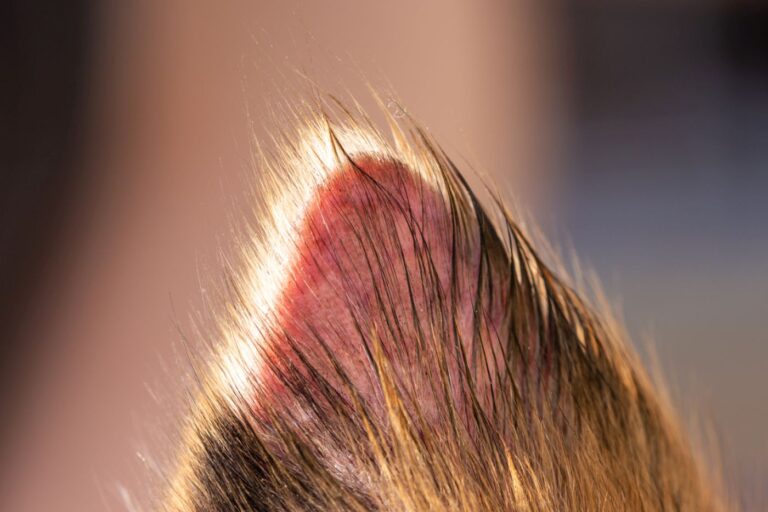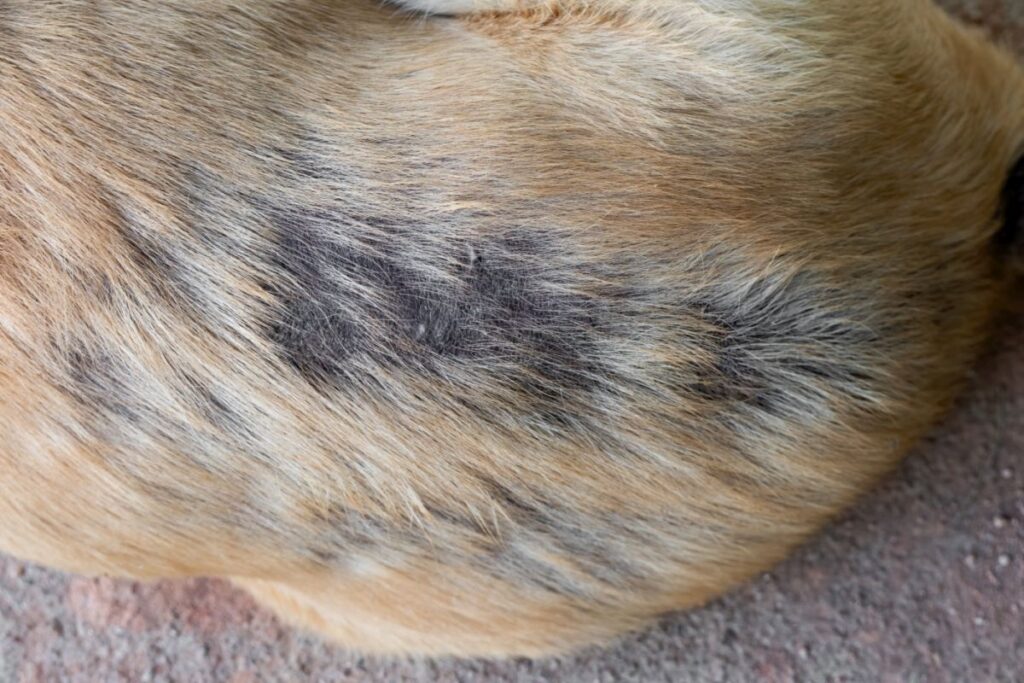The skin condition usually progresses slowly and often occurs in middle age. Initially, affected animals usually show brittle hair or hair loss (alopecia) which gradually extends to the surrounding skin areas.
Plus, the following symptoms are typical for sebaceous adenitis in dogs:
- The hairless patches are scaly, and the skin appears thickened (hyperkeratosis).
- The fur is often matted with a yellow or brown mass, creating small tufts of hair.
- The disease is also indicated by keratin cuffs, which are large silver scales that surround the hairs (follicular hyperkeratosis).
Note: Despite these skin problems, affected dogs are usually lively.
How Does Sebaceous Adenitis Develop?
The progression depends on various factors, such as the extent of the disease or the breed. Bacteria penetrating the damaged skin can cause inflammation and itching.
In some cases, sebaceous adenitis in dogs occurs in conjunction with digestive issues or Otitis externa ceruminosa, which is an overproduction of earwax.
Which Skin Areas Are Often Affected?
Sebaceous adenitis usually begins on the head and then spreads across the ears and back to the tail. If left untreated, it can also affect other skin areas on the dog’s body.
When Should I Visit The Vet?
Numerous conditions can lead to hair loss in dogs. Therefore, it is vital to ask your vet for advice as soon as you notice skin changes or other signs of illness in your dog.

